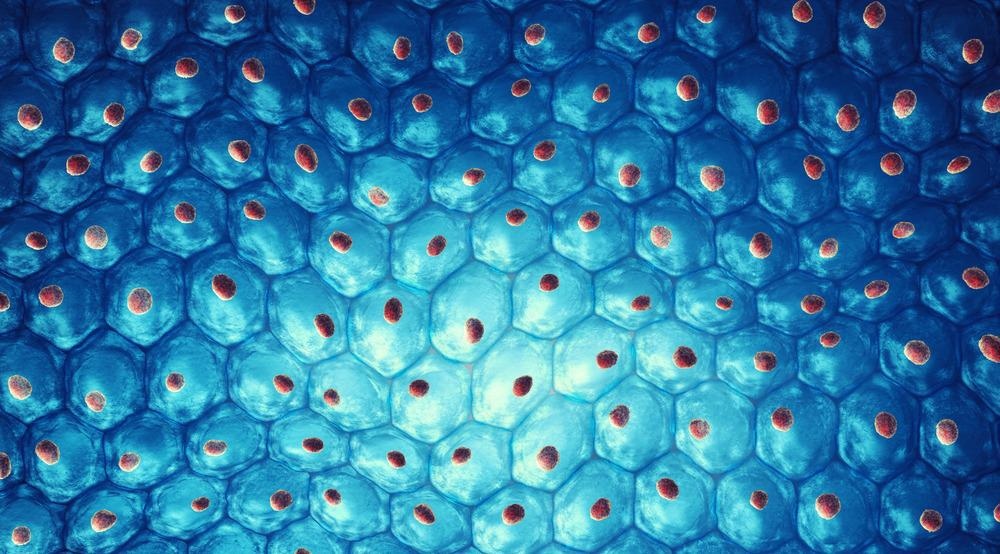In a recent Communications Biology study, researchers discuss the development of a novel imaging approach using 3D microscopy that allows for both molecular and cellular features of human organs to be studied in the third dimension. AZoOptics takes a closer look at its applications.

Image Credit: nobeastsofierce/Shutterstock.com
Using 3D Microscopy to Study Human Organ Cells
The researchers analyzed pancreatic tissue cuboids from diseased donors that consisted of more than 200,000 islet cells.
Following the isolation of the pancreata, all organs were scanned in a computed tomography (CT) scanner to determine their volume.
The organs were then cut into cuboids, fixed, and subsequently used for various analytical purposes, including whole-mount immunolabeling, near-infrared optical project tomography (NIR-OPT), and light-sheet fluorescence microscopy (LSFM) imaging.
The data acquired from each of these experiments allowed for the three-dimensional (3D) reconstruction of the organs.
Using these labeling protocols and mesoscopic imaging, the researchers determined the volume of islet cells within the pancreata, as well as their spatial 3D coordinates. In addition to maintaining the spatial and volumetric information on each individual islet cell, the researchers also used the properties of the auto-fluorescent tissues to determine 3D information on organ pathology.
Current Technologies for 3D Organ Imaging
Despite the vast amount of knowledge that has been acquired over the past several centuries on human development and disease, it remains difficult to directly observe biological processes of interest while they are still occurring in humans.
Various technologies, many of which rely on the use of model systems, have been adopted to assist in studying these processes.
Some of the most common in vitro models that are used as proxies for studying human biological include monolayer cell culture, cell aggregates, organoids, organ-on-a-chip systems, and tissue explants.
Although there are several advantages associated with using both in vitro and in vivo models to study human disease, challenges on their complexity, experimental accessibility, and cost remain.
The relevance of many of these models to human diseases is also a significant limitation, as many in vivo models exhibit species-specific differences in terms of the biology responsible for their disease and development processes. Furthermore, there is a lack of animal models that are currently available to resemble all aspects of many human diseases, some of which include microcephaly, Alzheimer’s disease, and autism spectrum disorder.
Monitoring Biological Processes in Real-Time
The ability to monitor numerous biological processes in real-time that are of particular interest to scientists and clinicians. Embryonic development, for example, is characterized by several tightly controlled processes that support the development of highly specialized tissues.
Gaining a closer insight into the precise mechanisms by which this process is achieved will not only provide a fundamental biological understanding on how embryos develop but could also support the development of more effective treatments for various fetal disorders.
Outside of embryonic development, disease pathophysiology is also a highly complex process that relies on numerous cellular, tissue, and systemic components. Improving the current methods of observing, diagnosing, and treating diseases will advance the efficacy of current and future therapeutic strategies.
The Future of 3D Organ Imaging
As compared to traditional methods used to study organ development and pathophysiology, the imaging modalities used in the current study of OPT and LSFM have transformed how large biomedical tissue specimens are studied in high-resolution 3D.
The incorporation of immunolabeling into their approach, the researchers circumvent the need to obtain deep tissue labeling throughout the intact organ, which remains a significant limitation of current labeling agents.
In terms of their contribution to pancreas disease pathophysiology, the approach designed by the researchers provides a way to determine whether islet cells of different size categories, compositions, or localization exhibit different processes that may contribute to disease conditions.
To this end, 3D evidence provided by the researchers demonstrates that the mass of human islet cells may exhibit significant heterogeneities in their distribution that are present at both longitudinal and radial axes of the gland. Future work can expand on this data in order to determine whether these clusters of islet cells have endocrine responses or functional features that differ from islet cells residing in other areas of the pancreas.
The researchers anticipate that the results of their current study can be applied to many other tissue or organ, such as the spleen, thymus, and ovaries, all of which have varying sizes. Their approach could assist in clarifying pathological mechanisms in the context of an entire human organ while simultaneously providing an opportunity to identify specific targets through the use of antibody labeling.
References and Further Reading
Hagn, M., Nord, C., Eriksson, M., et al. (2021) 3D imaging of human organs with micrometer resolution – applied to the endocrine pancreas. Communications Biology 4(1063). doi:10.1038/s42003-021-02589-x
Jackson, E. L., & Lu, H. (2017) Three-dimensional models for studying development and disease: moving on from organisms to organs-on-a-chip and organoids. Integrative Biology 8(6); 672-683. doi:10.1039/c6ib00039h
Fretaud, M., Riviere, L., De Job, E., et al. (2017) High-resolution 3D imaging of whole organ after clearing: taking a new look at the zebrafish testis. Scientific Reports 7(43012). doi:10.1038/srep43012
Disclaimer: The views expressed here are those of the author expressed in their private capacity and do not necessarily represent the views of AZoM.com Limited T/A AZoNetwork the owner and operator of this website. This disclaimer forms part of the Terms and conditions of use of this website.